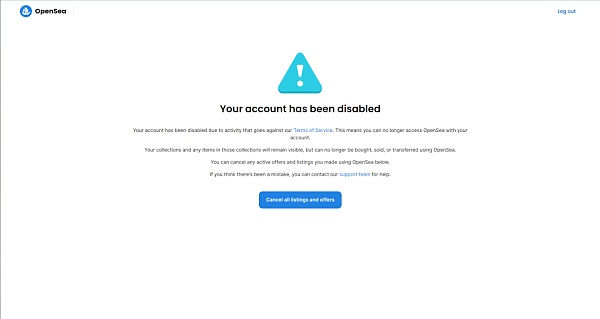Blockchain Capital: Why did we lead the investment in Worldcoin? We believe it will become the largest gateway to the crypto world.
Why did we invest in Worldcoin? We believe it will become the biggest entry point to the crypto world.Author | Blockchain Capital
Compiled by | Wu Shuo Blockchain
Original link:
https://blockchain.capital/worldcoin-proof-of-personhood-world-id-and-the-future-of-crypto-onboarding/
- Blockchain Capital: Why did we lead the investment in Worldcoin?
- Understanding the Launch Rules of Neutron, the First Consumer Chain in the Cosmos Ecosystem
- Worldcoin has completed a $115 million C round of financing, led by Blockchain Capital.
Attached: Tools for Humanity, the technology company behind Worldcoin founded by Sam Altman, CEO of OpenAI, raised $115 million in Series C funding, led by Blockchain Capital, with participation from a16z and others.
In the past decade, we have evaluated thousands of ambitious and inspiring crypto projects, but Worldcoin is undoubtedly one of the most ambitious and reliable efforts, with the goal of bringing cryptocurrencies to over a billion people.
Through the use of a novel distribution strategy, Worldcoin has the potential to become the largest on-ramp for crypto, coupled with the most widely adopted crypto wallet, and most importantly, it will establish a new concept for the internet – Proof of Personhood.
Given recent advances in artificial intelligence, Proof of Personhood is particularly useful for distinguishing humans from robots on the internet. Details will be discussed later.
It’s worth noting that it’s working: despite extremely limited footprint in initial tests and no marketing efforts, Worldcoin has already successfully onboarded nearly 2 million people. This is just the beginning: co-founders Sam Altman and Alex Blania are focused on expanding it to the global population.
Initial Impressions
Contributors to the Worldcoin protocol have done a poor job of spreading their story.
Like most people, our initial reaction to Worldcoin was negative. It seemed Orwellian in nature, a harmful combination of hardware, biometric technology, and encryption technology – not for the faint of heart.
Even Edward Snowden joined in the criticism by saying, “Don’t categorize eyeballs…”
But these criticisms missed the mark.
To evaluate Worldcoin from first principles, our team spent hundreds of hours carefully studying Worldcoin’s detailed documentation, talking to dozens of hardware and software contributors to the project, and debating everything from the underlying technology to the project’s GTM strategy.
At first glance it might seem like a dystopian attempt to create a global currency using invasive (and capital-intensive) hardware, but it’s actually quite the opposite: a completely privacy-preserving solution to address an increasingly common problem. Additionally, our evaluation determined that Worldcoin possesses the contributor community (including its initial development team in Tools for Humanity, “TFH”), the technology (both software and hardware), and the strategic support necessary to support billions of users globally.
What is Worldcoin doing?
To enroll and verify users, Worldcoin scans everyone’s irises (the colored part around the pupil) to validate that this person is indeed a real, living, unique human. The scan is performed by a custom hardware device called the “orb.”

When it comes to biometric technology, there are plenty of reasons for concern and sensitivity, especially when you add in some encrypted elements. Some science fiction movies and novels even include some kind of “eyeball harvesting” concept. So the dystopian perspective quickly comes to mind.
However, what actually happens inside is that the orb takes a photograph of the iris and the device generates a unique code of iris randomness (an “iris code”). By default, the original biometric measurement data is immediately destroyed, and the iris code is the only thing that leaves the orb.
In the World App from TFH (the first wallet of the Worldcoin ecosystem), verified users will receive a World ID that allows them to privately prove to anyone they choose that they are indeed a unique individual. These on-chain identity commitments are completely encrypted and secure. Even though the iris code is reversible, there is no way to know how anyone is using the World ID, and there is no way to track individual users.
In other words, the World ID is a privacy-preserving identity protocol that does not collect or store anyone’s biometric information.
As part of this process, users can also create their own encrypted wallets in the World App. Given the witch attack resistance of World ID, the World App is the first self-hosted wallet in the world with a known user group – all other wallets can only rely on guesswork to obtain DAU/MAU and other indicators.
Not bad…but why? At first glance, it’s difficult to understand the value that a personal identity protocol can create. This is a fundamental reality for “category creators” – as a new building block, it’s difficult to quantify the usefulness and value of personal identity in the early stages. However, at the highest level, it’s easy to recognize that as AI advances, distinguishing between humans and robots on the internet will become increasingly difficult and important.
More specifically, we can consider applications today that have clear practicality. One such opportunity in Web3 is airdrops: many token-based projects want to offer token rewards to each unique user (e.g. for signing up, transacting, or any other unique behavior that token-based projects want to incentivize).
Unfortunately, identifying unique users is difficult. Some projects may require users to provide government-issued IDs as a witch defense mechanism – but this presents several problems: 1) it excludes over half the world’s population who lack suitable ID; 2) it greatly increases friction; 3) many users have reason to be skeptical of providing such information given the long record of data security vulnerabilities. As a result, the rewards originally intended for unique users are disproportionately allocated to witches attacking the mechanism and launching thousands of wallets to collect large amounts of free rewards.
So, airdrop issuers can use World ID as a personal identity mechanism to supplement their airdrop standards, rewarding unique users.
And the applications for personal identity go far beyond crypto. Internet services have already introduced a lot of friction to distinguish between users and “robots” – we’ve all become so used to this friction that we hardly think about it anymore.
Friction, sustainability, and trust
One example of this slow friction is the increasing difficulty of captchas. The purpose of intelligence tests like CAPTCHA is to mitigate the risks and costs of witches and DDoS attacks. However, CAPTCHAs have become so challenging that most real users have difficulty providing the correct answers.

More importantly, this is frustrating for users and network service providers alike. The interesting fact is that people around the world spend a total of about 200-500 years a day solving CAPTCHA puzzles (4.6 billion internet users encounter a CAPTCHA every 10 days, and solving it successfully takes 15-35 seconds). All this, just to prove we’re human!
But the real issue isn’t CAPTCHAs, they are only a common symptom, not the root problem. The real problem is that we cannot quickly and reliably differentiate between bots and real humans online – given recent advances in AI, this challenge is becoming more widespread and harmful.
This impotence has significant potential implications: the vast majority of the web depends on ad-based revenue to pay for infrastructure costs. However, in a high bot-to-human ratio, the cost of serving this (bot-heavy) traffic will surpass the revenue generated by serving ads for humans. Many websites and web-based services will become economically unsustainable, and these web-dependent services may cease to exist. It is hard to imagine what other services never get created because the current state (let alone further growth) of this problem makes them economically unviable from the outset.
This problem also transcends technical or economic nature and extends into the cultural realm. We are unable to differentiate between bots and humans, which seriously undermines trust in digital communities. The challenge for human users to identify information (people) and filter out noise (bots) in their digital communities is growing increasingly difficult.
It is evident that as we continue to advance AI, intelligence tests such as CAPTCHA will not solve the problem. This is where identity verification protocols such as World ID come in.
World ID and Identity Verification
By providing convenient tools to differentiate between bots and humans, identity verification protocols like World ID can improve user experiences, maintain the economic sustainability of existing web services, open up design space for new web services, and provide a foundation for increasing trust in digital communities. We believe that a privacy-preserving identity verification protocol will become a fundamental element of the internet. Specifically, World ID empowers individuals to verify their humanity online while maintaining anonymity through zero-knowledge proofs. Verification is as simple as clicking a button to sign a transaction.
What happens behind the scenes? Behind the scenes, World ID aggregates are maintained as a collection of sets of identity commitments in the form of Merkle trees. By leveraging zero-knowledge proofs, users can show their proof of presence in the Merkle tree without revealing their specific identity. Essentially, this allows World ID users to confirm their status as a verified human without revealing who they are, ensuring that their activity remains truly private.
While the exact type of new web services is still to be seen, some easily obtainable outcomes, as outlined by some World ID developers, include:
Advanced spam filters: intelligent tests like browser DDoS protection and CAPTCHA without the CAPTCHA
Reputation systems: by preventing the creation of multiple accounts, the effect of reputation systems is significant. For example, they can unlock uncollateralized loans in DeFi.
Governance: one-person-one-vote (or similar) through World ID in a privacy-preserving way is made feasible
Authentication: biometric-based authentication can be part of a digital identity theft solution
Fair allocation of scarce resources: with a personhood proof protocol like World ID, it is possible to allocate scarce or valuable resources directly over the internet, without the risk of a Sybil attack.
These are just preliminary thoughts on how to use World ID and Proof of Personhood online. The biggest use cases and opportunities are likely ones we haven’t yet imagined. We’re excited to see others implement and leverage World ID in creative ways.
Team, Track Record, and Traction
One of the core reasons we’re excited to be working with TFH, the team that supported Worldcoin’s early development and growth, is the quality of the team and their track record of problem-solving and generating real traction.
Sam Altman and Alex Blania are the co-founders of TFH and the original visionaries behind Worldcoin. Sam brings a unique perspective from the forefront of AI as co-founder and CEO of OpenAI, and direct insights into startup scaling and success as the former President of YCombinator. Alex Blania is the perfect complement to Sam: a founder with a unique focus on details and execution, we strongly suspect he’ll be a household name in the next decade. Together, they embody the delicate balance between vision and execution.
Perhaps most importantly, Alex and Sam have recruited verified talent to help them realize TFH’s ambitious vision. The team has already collectively built a track record of problem-solving. Specifically, the team has designed and produced many custom hardware solutions previously thought impossible or infeasible. The team has successfully attracted nearly 2 million users despite being in early test releases with almost no marketing.
Finally, we believe that TFH has a unique opportunity, with the right technology, team, and timing, to expand the fundamental elements of identity that protect privacy on the internet — and in doing so, Worldcoin may become the largest entry point into the cryptocurrency space, and the World App may become the most widely adopted cryptocurrency wallet.
Note: Blocking all articles only represents the author’s point of view and does not constitute investment advice.
Original link: https://www.bitpush.news/articles/4469747
We will continue to update Blocking; if you have any questions or suggestions, please contact us!
Was this article helpful?
93 out of 132 found this helpful
Related articles
- How can we determine whether a stablecoin is an official native asset after Multichain’s shutdown exposed asset security issues?
- Summary of Hong Kong Securities and Futures Commission’s Cryptocurrency Consultation: Retail Trading, Temporary Ban on Stablecoins, and Inclusion in Indices are Minimum Standards
- LSD injects a shot in the arm for blockchain. What risks should users pay attention to?
- In-depth analysis of the new Starknet client Beerus: How to achieve trustless state verification?
- Latest article by Vitalik: Keeping it Simple and Avoiding Ethereum Consensus Overload
- NGC Ventures: Why we invested in Opside
- Investment tips for the next bull market: In-depth analysis of the development status and trends of 15 cryptocurrency tracks






